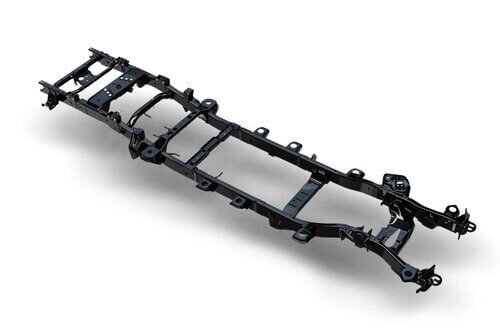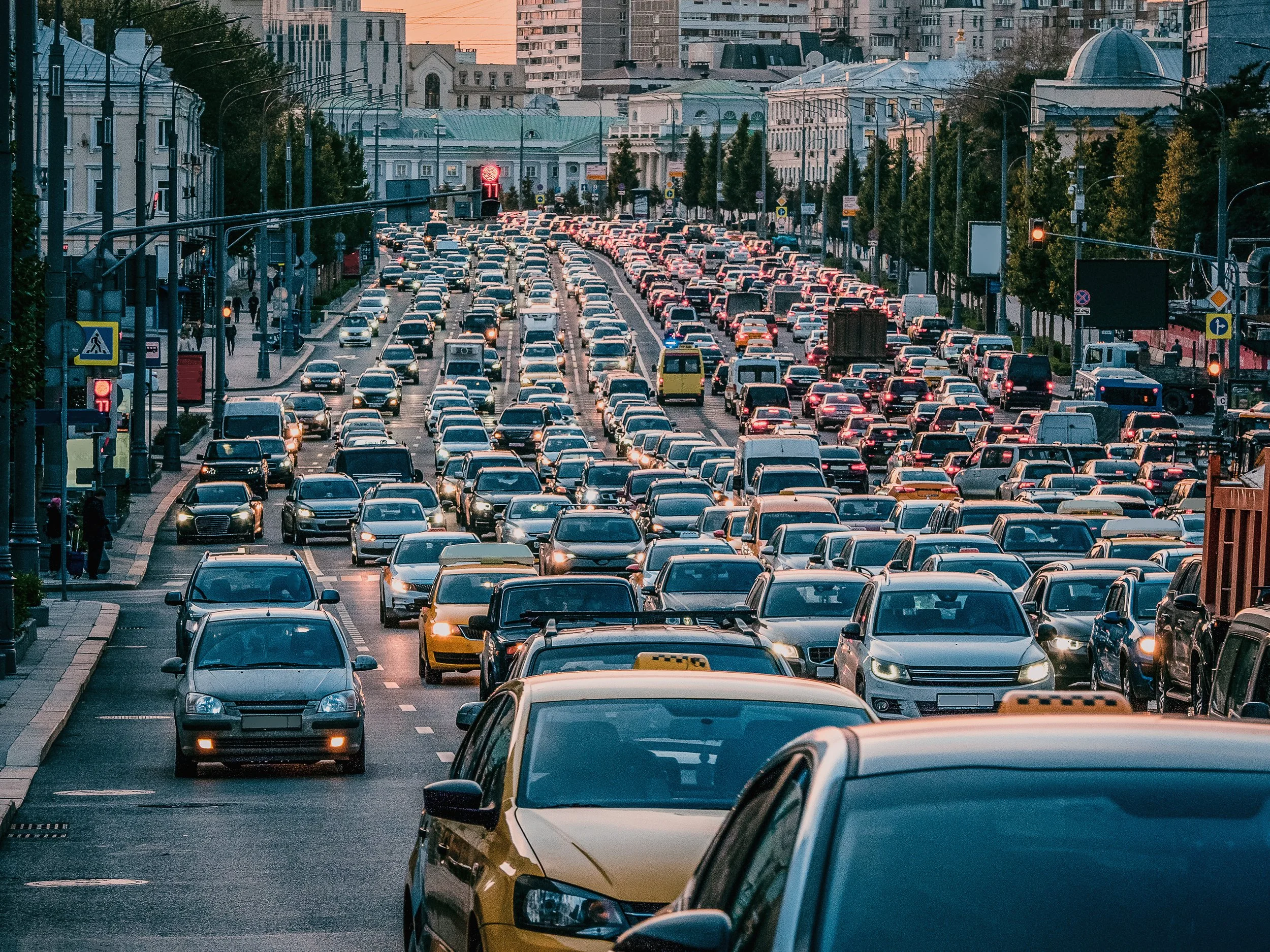You’ve just been involved in a front-end collision. The fenders on your vehicle are crumpled up and the radiator made its way to your engine. You are left with not much more than two metal beams protruding out of your car. After a collision like this, most insurance companies are going to total your car. Still, you might be interested in frame straightening to repair it.
Performed by body shops with specialized tools, there are times when frame straightening can save you thousands of dollars over junking your car. To figure out the best solution for you, it’s imperative that you evaluate the frame damage. This might leave you with some questions, such as:
What constitutes frame damage?
Is it safe to drive a car with frame damage?
What does it cost to repair a car with frame damage?
Should I fix my car once it has frame damage?
Are there better alternatives?
In this article, we hope to answer all of those questions for you. From figuring out if frame straightening is the right process for you to whether it’s time to junk your car, we hope to bring you closer to a solution.
What Constitutes Serious Frame Damage?
Under all the parts and components that make up your car, you have structural support known as the frame. It’s there to provide strength and stability, especially during an accident, and has been precisely engineered to tight specifications. Whenever the integrity of this system is compromised even a little, it’s referred to as “frame damage.” This is a broad term that can relate to any part of the frame.
What Does Frame Straightening Cost?
Estimates vary based on the severity of the damage in question, but full frame straightening usually costs between $500 and $750 plus repairs to other areas of the vehicle. This process is highly situational – your best bet is to ask a body shop to evaluate the vehicle before you plan on having frame work performed.
How Can I Tell if a Car Had Frame Damage in the Past?
A body shop can usually alert you to prior frame damage during a pre-purchase inspection. Another way is to run a detailed VIN check to uncover any documented accidents in the vehicle’s history. You can check for damage yourself, but keep in mind that serious damage may not be visible to the naked eye.
What Parts of a Frame Can Be Damaged?
There are many components of the frame which you may be able to identify if you are so inclined – this might help the body shop determine whether repairing your vehicle will be possible. The body shop can use precise tools to measure for tweaks or bends that may not even be visible.
Though the main strength of a unibody comes from an integrated frame, there are usually front and rear sections which hold the driveline components. These are usually removable in segments called subframes and can often be repaired or replaced separately.
Ladder frame
This is an older design for passenger cars, but it’s still used on most trucks today. It offers more strength and higher resistance than the unibody frame. This setup consists of two symmetrical rails that run the length of the car and are connected by cross members. Repairing a ladder frame is easier – a car with a ladder frame could survive an accident that would send a unibody to the junkyard.
Cracks, holes, rust, and visible bends in a ladder frame are major red flags, but most accident damage comes in the form of bends and tweaks that are invisible to the naked eye. Have the body shop measure the frame to check its alignment.
Unibody frame
If you climb under your car and you don’t see two massive metal rails running from the front to the back, your car is probably a unibody design. This means that the body of your car and the frame are one piece. If you damage this frame, you likely have a car that won’t drive straight. The car will usually be weakened where it was damaged making repair efforts futile. You cannot “straighten the frame” on a unibody vehicle because the frame is not a separate entity, but other repairs may still be possible.
Now that we’ve covered the two distinct frame styles, let’s move on to specific components.
A, B, and C Pillars
These vertical supports are located across the car from the front to the back. Some vehicles feature a D-pillar as well, like minivans. Serious damage to these pillars can rarely be repaired as they are what strengthen the vehicle in the event of a rollover accident.
Apron
This refers to the inner fender sections of your car with two sides. It extends out from your core support and makes its way to the strut tower. Damage here can often be repaired.
Core Support
This is sometimes called the radiator support. It’s the section of your frame that is found in the front of your car. It can often be damaged and replaced independently from the rest of the frame.
Firewall
This separates the engine bay from the cockpit. This combines with the front rails, strut tower, apron and core support to create the unibody design. Damage to the firewall is often difficult to repair and rarely results from anything less than a very hard front-end collision.
Floor Pan
This metal sheet gets welded across the cross members. It ends up being the floor of your car. It also features some holes and grooves to house the electric wiring and drivetrain. Most floor pans can be repaired and replaced as needed.
Hood
Most people don’t realize that the strange shapes under a car’s hood are actually specifically designed for strength and support in the event of a front-end collision. Damage to the hood can render it less effective in a subsequent accident. Luckily, hoods can be replaced – but the hood supports (where the hinges are) may have been tweaked requiring additional repairs.
Quarter Panel
This is a metal sheet that fits the rear panels on either side of your vehicle. These are part of the wheel well and often house the gas cap. Some cars, like a Corvette, feature a design that’s made from carbon fiber or fiberglass instead of metal or aluminum.
In any case, the skin on the outside of your car is not usually giving the car its strength – but since there are usually components housed right under a car’s exterior panels, damage to the outside could hide worse damage within.
Rear Support
This is found to the rear of your car’s frame. It features the unirails, the rear bumper support, plus a floorboard where you house the spare tire. This could be a detachable rear subframe as well. This area can usually be replaced but repairs may be difficult.
Rocker Panel
You will find this between the wheels, below the doors. They are on both sides under the bottom of the doors and they provide support to the doors and cabin in the event of a rollover. Rocker panels can usually be replaced.
Strut Tower
Each vehicle features four of these in the corners of the car. They align your vehicle’s suspension and are part of the rear quarter panel and front apron, respectively. A hard pothole, a jump, or an encounter with a curb or other object could all cause damage to the strut tower. But since this section is already reinforced to take hard forces from the road, damaging a strut tower is difficult – and so are the repairs.
Unirail
If all you see under your car are two symmetrical beams running from the front to the back of your car, these unirails are considered to be one of the stronger parts of your frame and serve as a foundation for other components that will be welded onto the rails of a unibody car. Heavy damage to these rails probably means the unibody of your car is damaged beyond safe repair.
Will a Car with Frame Damage Repairs Be Safe to Drive?
You may remember driving behind a vehicle that you swore was moving sideways! Its front wheels were out of line with the rear, and the whole car appeared to be twisted. That’s called crab walking or dog tracking: it’s a scary sight, and it’s a clear sign of extreme frame damage.
Just because your car sustained frame damage doesn’t necessarily make it unsafe to drive. If your vehicle has four aligned wheels and can travel straight without an issue, it should be safe to drive. The more important question might be: is it going to be safe in a collision? Only a body shop can answer that question.
Is frame straightening necessary?
If you have a small dent in one of your rear quarter panels and nothing happened to your car’s various crumple zones, it’s likely that the rest of your frame is fine. In most cases you could drive this car safely after normal repairs were made.
Once your car is involved in a significant collision resulting in crushed crumple zones or a bent frame, frame straightening may be necessary. This process involves extensive cutting, welding, and aligning by trained professionals using specialized equipment. Even after this process, the car might not be as safe as it once was.
Only a body shop can tell for sure. Frame straightening is performed by local body shops that have specialized equipment for the task. Not all of them do, so call around before you have your car taken somewhere.
Think of It This Way…
If you were to crush a soda can and then attempt to stretch it back out, would it be just as strong again? Probably not. Sure, it might look the same, but that can is going to crush much easier the second time than it did the first. It’s the same with your car’s frame, body, and other components.
You can pay to have the frame repaired, but even still your car likely won’t ever be as safe as it was in its original condition. Sometimes it’s best just to junk the car, sell it for parts, or sell it to someone who is willing to take the risk.
Sometimes your insurance company will even offer to make that decision for you based on your state’s rules for totaling a vehicle, issuing a salvage title and requiring repairs to be made before the vehicle is driven on the road.
Don’t try to straighten your own frame. Source
How Frame Straightening Works
Many auto body shops have a frame machine that consists of upright towers that rotate 360-degrees to work on parts of your frame. Modern devices utilize sonic senders or computerized lasers to assess the structure beyond what the naked eye can see. This process is also called aligning a frame.
The mechanic attaches chains to the points of the frame where straightening is needed. Then, the hydraulic equipment increases tension on these chains to pull the frame back into shape. The mechanic may cut, weld, and shape the frame to help it align. This process is performed until the frame reaches the automaker’s specifications to ensure the vehicle drives appropriately.
You can see why that might not result in a car that’s as safe as it once was, like fixing a soda can that you crushed under your foot.
Is Frame Straightening Safe?
When performed properly, a straightened frame can be made nearly as safe as it was before the accident. In some circumstances, the damage can be repaired using bracing and other techniques that make the car even stronger. But if having the thought in the back of your mind bothers you, it might be worth skipping frame alignment and getting into another car instead.
While frame straightening won’t leave you with a car that’s as strong as it once was, many people still choose to move forward with it, putting thousands of cars back on the road per year. If you are going to use frame straightening on your vehicle, choose a mechanic that’s going to effectively restore the bent frame to factory specifications. Anything more than a minor dent shouldn’t be repaired at home, but instead you should allow the professionals to do what they’re best at: getting you back on the road safely.
The title specialist at Dirt Legal offer VIN Checks to give you peace of mind when buying a car. We also offer title replacement for cars, motorcycles, and almost anything with wheels. Use our services now or bookmark them for later.
We are not attorneys. This article is not legal advice. Cover image source





















A pre-purchase inspection usually costs less than $100 and takes less than 1 hour to complete. You will learn about upcoming repairs and maintenance needs as well as the vehicle’s overall safety and condition.